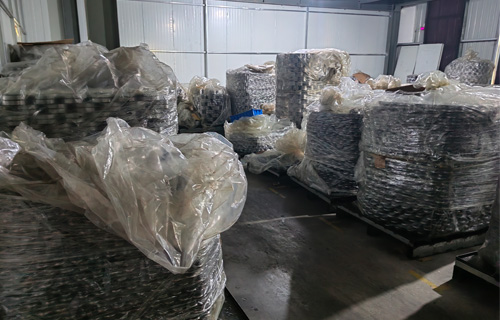
Dec . 04, 2024 11:39 Back to list
single tapered roller bearing
Understanding Single Tapered Roller Bearings Design, Function, and Applications
Single tapered roller bearings play a crucial role in the world of machinery and equipment, playing a vital part in supporting various components across diverse industries. Their unique design and functionality make them indispensable in applications where axial and radial loads need to be managed effectively. In this article, we will explore the structure, operational mechanics, benefits, and applications of single tapered roller bearings.
Design Characteristics
A single tapered roller bearing consists of several key components an inner ring (cone), an outer ring (cup), and tapered rollers. The design features a conical shape, where the roller elements are wedged between the inner and outer rings. The ability of the rollers to distribute loads across a wider area enhances their load-carrying capacity. The tapered angle of the rollers allows them to accommodate both axial and radial loads, making them highly versatile.
The raceway geometry is critical to the performance of these bearings. Tapered rollers are positioned such that their axes converge at a single point, which is in line with the bearing's center. This design reduces friction and improves the efficiency of the bearing, allowing for smoother operation and less wear over time.
Functionality
Single tapered roller bearings operate under the principle of rolling contact. When the bearing rotates, the rollers roll along the raceways rather than sliding, reducing friction and heat generation. This rolling motion is essential for maintaining the longevity of the bearing and ensuring its effective performance under various load conditions.
The capability of a single tapered roller bearing to handle both radial and axial loads make it ideal for applications where these loads are encountered simultaneously. For instance, in automotive applications, these bearings are often used in wheel hubs, where they support both the weight of the vehicle (radial load) and the forces experienced during acceleration and braking (axial load).
Advantages
single tapered roller bearing

One of the primary advantages of single tapered roller bearings is their ability to support high radial and axial loads without compromising performance. This makes them suitable for heavy machinery and equipment where durability and reliability are paramount. Additionally, the efficient design allows for compact installations, making them ideal for applications with space constraints.
Another significant benefit is the ease of installation and maintenance. Single tapered roller bearings are relatively straightforward to install and can be adjusted to accommodate wear over time, prolonging their service life and reducing replacement costs.
Moreover, these bearings have excellent performance under misalignment conditions, which is particularly beneficial in applications where machinery may not always be perfectly aligned. The tapered design allows for some degree of self-alignment, reducing the chances of premature failure.
Applications
Single tapered roller bearings are used in a wide range of applications across various industries. In the automotive sector, they are prevalent in wheel hubs, transmissions, and differentials, where they ensure optimal performance and safety. In the manufacturing industry, these bearings are utilized in gearboxes, conveyor systems, and cranes, where they support heavy loads while maintaining efficiency.
Moreover, the aerospace industry employs single tapered roller bearings in aircraft engines and landing gears, where reliability and performance are of utmost importance. They are also found in agricultural machinery, such as tractors and combine harvesters, ensuring smooth operation under varying load conditions.
Conclusion
In summary, single tapered roller bearings are integral components that enhance the performance and durability of various mechanical systems. Their unique design, capable of handling both axial and radial loads, makes them a preferred choice across multiple industries. As technology continues to advance, the demand for efficient and reliable bearings will grow, solidifying the importance of single tapered roller bearings as a critical element in modern machinery and equipment. Understanding their operation and applications enables engineers and manufacturers to make informed decisions, leading to improved performance and longevity of their products.
Latest news
-
Premium Deep Groove Ball Bearings | High Speed & Reliability
NewsAug.29,2025
-
Durable Scaffolding Clamps - Secure & Reliable Tube Connectors
NewsAug.28,2025
-
Common Failures in Thrust Ball Bearings and Solutions
NewsAug.22,2025
-
How Tapered Roller Bearings Can Take Shock Loads
NewsAug.22,2025
-
Angular Bearings in High-Precision Spindles
NewsAug.22,2025
-
The Impact of Misalignment on Cylindrical Roller Bearing Performance
NewsAug.22,2025
